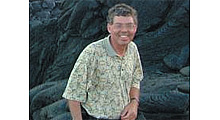
Doug Lung
The FCC has released details on its rescheduled workshop to discuss unlicensed spectrum issues related to the broadcast incentive auction proceeding. The workshop, now scheduled for 9:30 AM to 12:30 PM on Nov. 8 at commission headquarters in Washington, D.C., will include two panels.
One panel will address the benefits and uses of unlicensed spectrum, and will focus primarily on white space devices, including their technical characteristics, and the opportunities they present. It will also consider the trade-offs in deploying unlicensed devices in the TV bands instead of other areas of the RF spectrum, the international development of white space technologies, and policy options to promote future unlicensed innovation.
This panel is comprised of several TV white space pioneers, including Elizabeth Bowles from WISPA, Jim Carlson of Carlson Wireless, Paul Garnett at Microsoft, Peter Stanford from Spectrum Bridge and Robert Rucker with the United Negro College Fund and AirU.
The second panel will examine the technical aspects of unlicensed operations in the 600 MHz band, potential uses of 600 MHz guard band spectrum for unlicensed services, and how that spectrum compares to TV white spaces. One of the topics is titled, “Amount of spectrum necessary to enable unlicensed technologies in the repacked TV bands, including implications of channel bonding, and impact of consistent, nationwide availability.”
The coexistence of multiple services in the 600 MHz band will be discussed, as well as “Technical and operational consideration related to enabling wireless microphones to successfully operate.�� And the impact to and from incumbent services in television Channel 37 spectrum will be considered.
The second panel is comprised of a wide range of 600 MHz spectrum users, including Mike Bergman from CEA, Mark Brunner with Shure Electronics, Robert Seidel from CBS, Mark Gibson at the American Society for Healthcare Engineering, Haiyun Tang from Adaptrum and Alan Norman, Google.
The workshop is open to the public and will be available live on-line. See the FCC Public Notice (DA 13-2102) for details.
The focus on TV white space is timely, as more systems are now being rolled out. The latest example is the system that Carlson Wireless is building to provide Internet access to Thurman, New York in the Adirondack Mountains. Providing Internet access to the town has been difficult due to lack of mountain-top tower sites (due to Adirondack Park Agency policies), heavy tree covers, dense foliage and the rugged geography of the area. Thurman town board and supervisor Evelyn Wood procured a grant from the Statewide Connect New York Broadband initiative to pay for the installation of the TV white space network. The service is priced competitively with satellite and, so far, does not have any limit on the bandwidth used or data overage fees.
TV white space and wireless microphones both require spectrum. I think there is less likely to be interference between these two than many fear, as most publicized TV band white space systems are in rural areas where there is little use of wireless microphones and plenty of available spectrum. Let's hope the repacking leaves some 600 MHz spectrum for secondary uses such as wireless mics (licensed or unlicensed) and TV white space devices. This spectrum won't be wasted.
The professional video industry's #1 source for news, trends and product and tech information. Sign up below.

Doug Lung is one of America's foremost authorities on broadcast RF technology. As vice president of Broadcast Technology for NBCUniversal Local, H. Douglas Lung leads NBC and Telemundo-owned stations’ RF and transmission affairs, including microwave, radars, satellite uplinks, and FCC technical filings. Beginning his career in 1976 at KSCI in Los Angeles, Lung has nearly 50 years of experience in broadcast television engineering. Beginning in 1985, he led the engineering department for what was to become the Telemundo network and station group, assisting in the design, construction and installation of the company’s broadcast and cable facilities. Other projects include work on the launch of Hawaii’s first UHF TV station, the rollout and testing of the ATSC mobile-handheld standard, and software development related to the incentive auction TV spectrum repack. A longtime columnist for TV Technology, Doug is also a regular contributor to IEEE Broadcast Technology. He is the recipient of the 2023 NAB Television Engineering Award. He also received a Tech Leadership Award from TV Tech publisher Future plc in 2021 and is a member of the IEEE Broadcast Technology Society and the Society of Broadcast Engineers.
